One of the most effective ways to communicate stories, exchange ideas, and create a community is through podcasting. Anyone who is prepared to put in the work can create a podcast, whether their goal is to entertain an audience, share their expertise, or develop an interview-based show. From selecting a topic to releasing and marketing your episodes, this guide will help you with every step of starting a podcast.
1) Understanding the Basics
It takes more than just pressing the record button to begin a podcast. Before getting into the technical aspects of your presentation, you need thoroughly outline its concept. A carefully considered plan keeps you on course as your audience grows and helps guarantee a seamless production process. Identify the topics you are genuinely passionate about to start. It will be challenging to attract and keep listeners if you aren’t enthusiastic about your material.
Choose the format that best fits your style next. Will it be a solo podcast where you discuss your thoughts, an interview-based show where you invite guests, or a combination of the two? While some podcasters flourish in a co-hosted environment where conversations flow freely, others prefer a commentary style. A storytelling format could be the ideal option if you are good at telling stories. Regardless of the path you decide on, being consistent with your content and maintaining audience engagement may be achieved by clearly outlining your vision early on.
Determining the length of each episode and the frequency of new episodes’ releases are other crucial considerations. While some popular presentations last more than an hour, others just last 15 to 20 minutes. Regardless of your choice, keeping a consistent schedule fosters expectation and trust among your listeners. You’ll position yourself for success in the podcasting industry by taking care of these fundamental components.
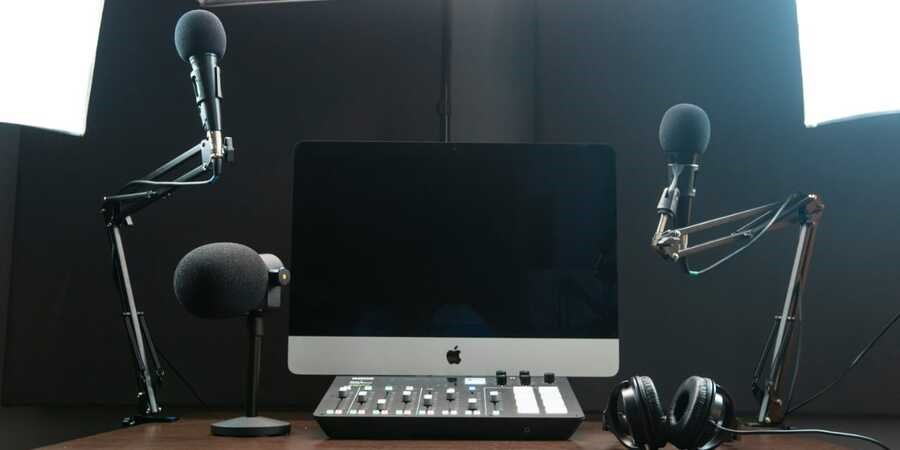
2) Choosing the Right Podcast Name & Branding
Strong identity and wonderful podcast art. Your name ought to be relevant to your content and niche, memorable, and simple to spell. To avoid any legal or branding disputes, make sure to search to see whether the name is already taken before deciding. Your show will stand out and be easier for listeners to remember if it has a short, catchy name. Beyond the name, branding is a major factor in determining the character of your podcast.
A catchy tagline that concisely summarizes the value of your show might increase its appeal. The cover art is equally vital and should be eye-catching. To guarantee excellent display on many platforms, the file should be saved in PNG or JPEG format and have the optimal dimensions of 3000×3000 pixels.
You may design a beautiful logo and branding components using tools like Canva to obtain a professional look. A strong visual identity establishes the proper expectations for your audience and makes your podcast readily recognizable.
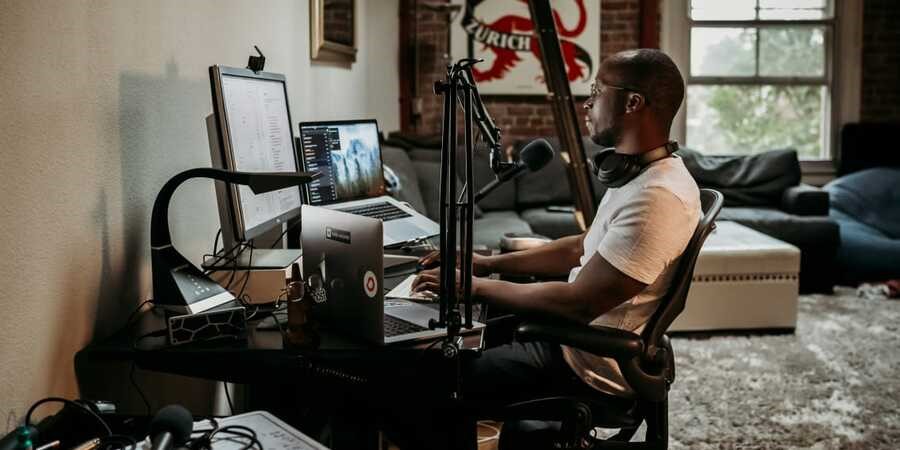
3) Choosing the Right Equipment for Podcasting
Although you don’t need a podcast studio, investing in high-quality tools can significantly improve how your show sounds. Clear, professional audio engages listeners and builds credibility. Selecting the appropriate microphone is crucial, regardless of your budget or preference for expensive equipment. The Blue Snowball and Røde NT-USB Mini are cost-effective choices that provide good sound quality. Mid-range options like the Blue Yeti or Røde Podcaster offer better clarity if you’re looking for something more sophisticated. For studio-caliber sound, those looking for high-end microphones like the Røde NT1-A or Shure SM7B should take them into consideration.
For clear monitoring, closed-back headphones are essential in addition to a microphone. Accurate audio monitoring is made possible by the Audio-Technica ATH-M50x, which also blocks out outside interference. Sound refinement also heavily relies on accessories. While a shock mount prevents undesirable vibrations, a pop filter lessens unpleasant plosive sounds. A boom arm or mic stand holds the microphone firmly in position to maintain the stability of your arrangement.
Just as important as your equipment is your recording space. To minimize echo and improve the acoustics of the room, pick a peaceful space with plush furniture. A cleaner recording can be achieved by soundproofing with carpet or foam panels. Your podcast may sound professional without requiring an expensive setup by making small adjustments to your area that have a big influence on overall quality.

4) Recording Software
To ensure that your podcasting content sounds professional, selecting the appropriate recording software is essential. A number of great solutions are available for recording solo or conducting remote interviews with guests. My personal recommendation for excellent audio and video recording is Riverside.fm. Even while podcasting with several individuals who are far away, it offers great pictures and sharp sound. As an alternative, Zencastr is a fantastic solution for remote interviews if you’re looking for a seamless workflow. Another well-liked option is SquadCast, which is renowned for being podcaster-friendly and having integrated cloud backup, making it ideal for guaranteeing that your recordings are secure no matter what.
To refine your podcast’s content after it has been recorded, you will require high-quality editing tools. Audacity and GarageBand (particularly for Mac users) are excellent free choices for novices or those on a tight budget. They enable you to refine the finished output, arrange portions, and eliminate extraneous noise. Premium tools like Adobe Audition or Hindenburg Journalist are good choices if you want more sophisticated functionality. These tools can help you improve your podcast and give you more control over the audio. Additionally, you may edit your podcast by only changing the transcript using AI-based tools like Descript, which makes editing much easier and faster
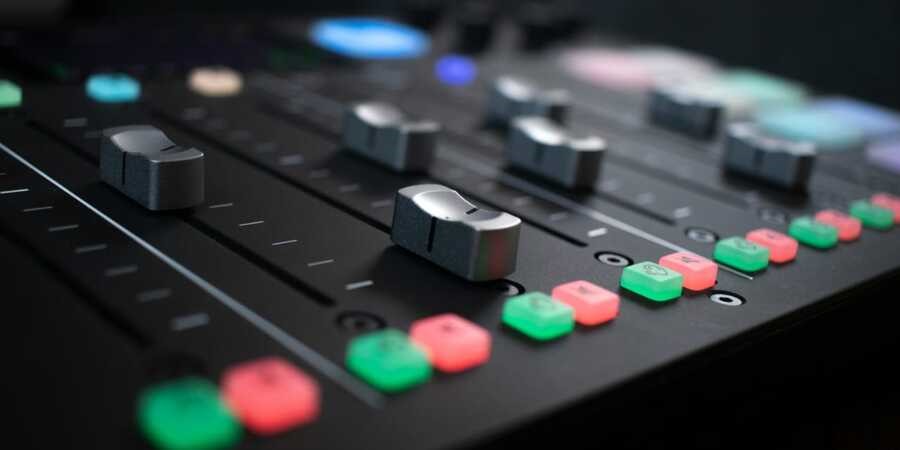
5)Podcast Hosting
To store and distribute your episodes to popular platforms like Spotify, Apple Podcasts, and Google Podcasts, you will require a podcast host when you’re ready to go live. In order to assist you get your podcast in front of listeners, hosting services can help. With its powerful analytics and marketing tools, Captivate is a fantastic choice if you’re searching for more sophisticated features. Podbean is a good option for anyone on a tight budget or who are new to podcasting because it is affordable and easy to use.
Buzzsprout– is also a fantastic option if you’re new to the art and want a hassle-free experience, especially for beginners. Lastly, Anchor (by Spotify) is ideal for new podcasters who want to dabble in the field without making a financial commitment because it provides free hosting. Your host will produce an RSS feed that platforms like Apple Podcasts and Spotify will use to publish your podcast after you have uploaded your episodes. Your content will be distributed and available to your audience thanks to this procedure.
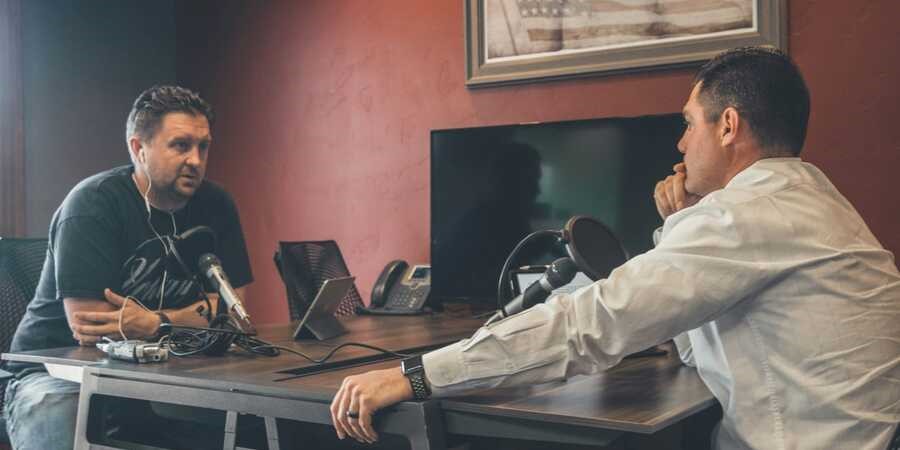
6)Episode Planning & Recording Best Practices
To keep things organized and structured before you hit record, make sure you have your script or outline available. Starting with a well-thought-out plan can help you stay on task, particularly when it comes to your intros. Keep them short and capture the attention of your listeners inside the first 30 seconds. Try to speak naturally as if you were talking to a friend when you are speaking. It will give the discussion a more real and interesting sense.
.The smooth flow of your podcast is disrupted by filler words like “um” and “uh,” therefore I constantly remind myself to minimize their use. Avoid background noise by selecting a quiet room when it’s time to record. For best sound quality, place your microphone 6 to 12 inches away from your mouth. I constantly record a backup in case of any technical issues because you never know when anything can go wrong. Additionally, before pressing the record button, remember to stay hydrated and warm up your voice.

7)Editing Your Podcast
The next step after recording your podcast is to concentrate on editing. The professionalism of your podcast can be greatly impacted by the quality of the editing. Background noise and any mistakes you may have made during recording are among the first things to address. Software like Audacity or Adobe Audition has noise reduction tools that you may use to make your audio sound cleaner. Adding intro music and outro music is another piece of advice. To prevent copyright concerns, utilize royalty-free tracks from platforms like Epidemic Sound.
Maintaining a tight and interesting podcast is also crucial. This entails cutting out any long pauses, stutters, or irrelevant digressions that could detract from the main point. If editing isn’t your forte, don’t panic; tools like Alitu can simplify the process and assist you in finishing it quickly.
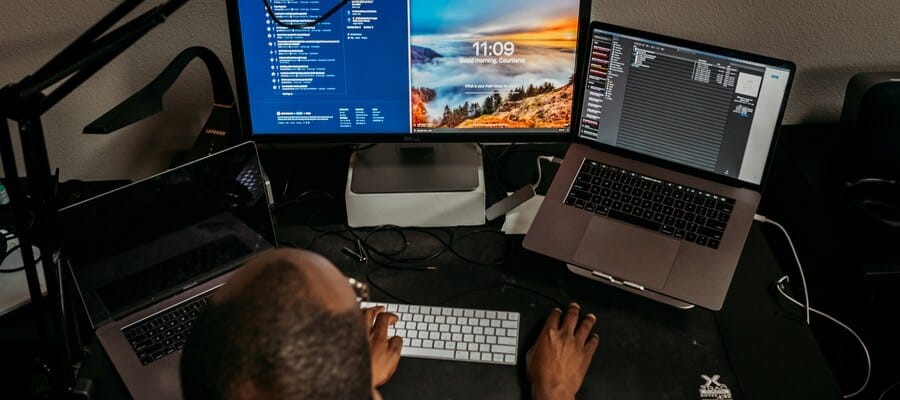
8) Getting Your Podcast Heard
Making ensuring your podcast is heard by your audience comes next once you’ve finished recording it. The most effective approach to accomplish this is to submit it to well-known directories such as Amazon Music, Google Podcasts, Spotify, and Apple Podcasts. To start reaching listeners, most podcast hosts provide a one-click submission process that makes it simple to publish your podcast on these popular platforms.
Following submission, it’s time to start using innovative marketing techniques. Social media is one of the best platforms for promoting your podcast. To keep your audience interested, share quotes, clips, and episode highlights. To notify your subscribers when new episodes are released, creating an email list is another fantastic option. You can increase your reach by working with other podcasters by either inviting them to be guests on your show or by appearing on theirs. In order to improve your podcast’s rankings and visibility, encourage listener engagement by requesting reviews and ratings. You may also repurpose your content by converting episodes into Instagram reels, YouTube videos, or blog posts. Use tools like Headliner or Veed.io to produce audiograms, which are visual soundbites that attract attention, to increase the engagement of your social media postings.

9)Monetizing Your Podcast
You can start thinking about monetizing your show once you’ve effectively grown your audience. Sponsorships and ads are among the first alternatives to look into. You can generate revenue while advertising products or services that your audience will value by collaborating with brands that are relevant to your art. Listener donations are another fantastic source of income. Fans can directly support your podcast and maintain the content flow with the help of platforms like Patreon.
Moreover, you might be innovative by providing courses and merchandise. Products that fit the theme of your podcast could be included in this. Selling branded goods or instructional materials might help you earn money while providing your listeners with something unique. Additionally, podcast and live events give you the chance to engage with your audience in real time, frequently through paid events that enhance the value of your podcast.

10) Consistency is Key
The beginning is only the first step in launching a podcast. Sustaining consistency is the true obstacle. Finding a schedule that works for you is essential, regardless of whether you decide to release episodes weekly, biweekly, or monthly. Your audience will grow accustomed to your content and value its consistency.
Remember to pay attention to the feedback of your audience. Inquire as to what they enjoy and where they believe you could improve. This enables you to produce content that appeals to them.
. To figure out what’s working, it’s also crucial to track your analytics. You can use the useful data from platforms like Apple Podcasts and Spotify to inform your future choices.
Keep learning and honing your craft as you continue to podcast. You can develop a more devoted and interested audience by gradually honing your interview and storytelling skills.
